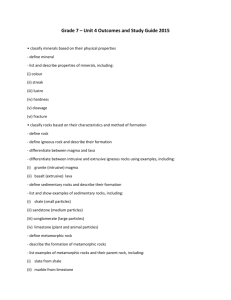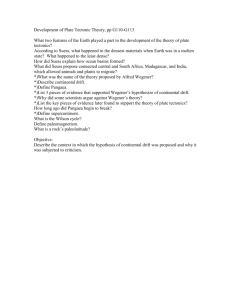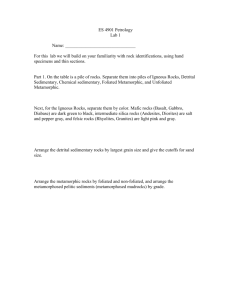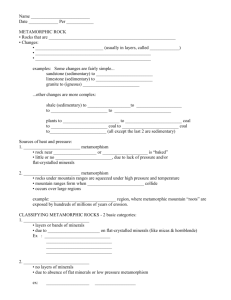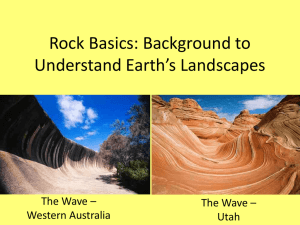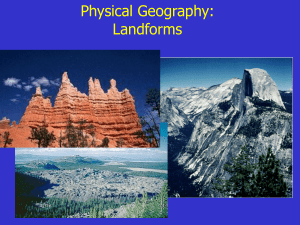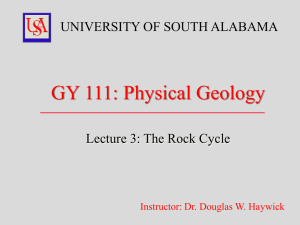Midterm Exam Study Guide
advertisement
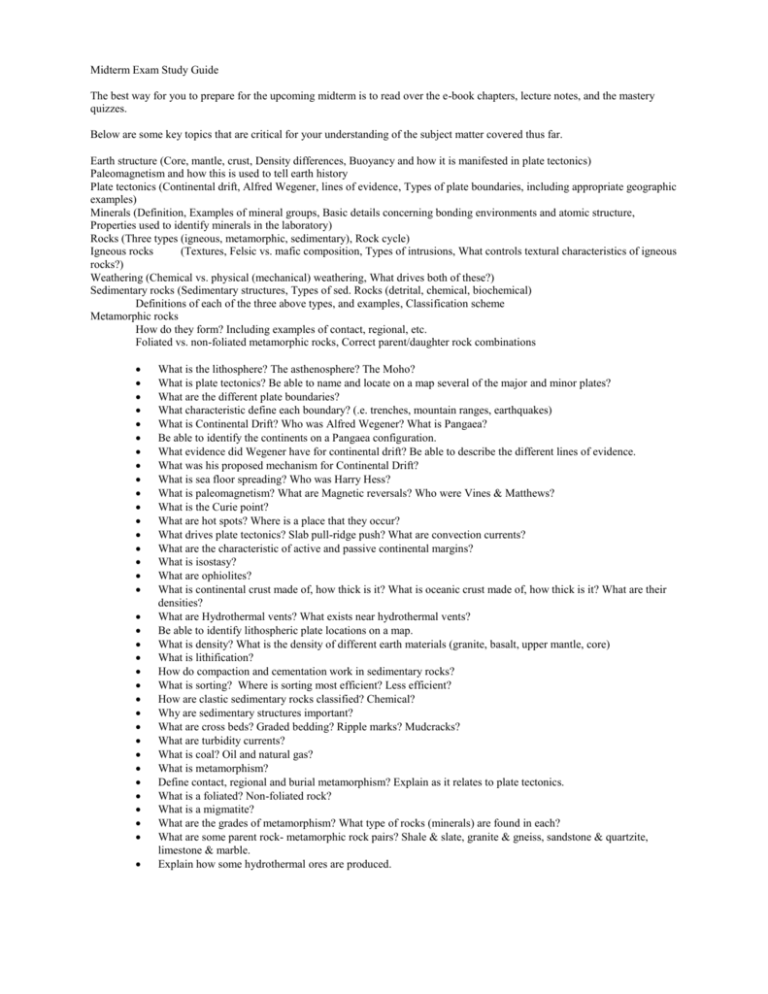
Midterm Exam Study Guide The best way for you to prepare for the upcoming midterm is to read over the e-book chapters, lecture notes, and the mastery quizzes. Below are some key topics that are critical for your understanding of the subject matter covered thus far. Earth structure (Core, mantle, crust, Density differences, Buoyancy and how it is manifested in plate tectonics) Paleomagnetism and how this is used to tell earth history Plate tectonics (Continental drift, Alfred Wegener, lines of evidence, Types of plate boundaries, including appropriate geographic examples) Minerals (Definition, Examples of mineral groups, Basic details concerning bonding environments and atomic structure, Properties used to identify minerals in the laboratory) Rocks (Three types (igneous, metamorphic, sedimentary), Rock cycle) Igneous rocks (Textures, Felsic vs. mafic composition, Types of intrusions, What controls textural characteristics of igneous rocks?) Weathering (Chemical vs. physical (mechanical) weathering, What drives both of these?) Sedimentary rocks (Sedimentary structures, Types of sed. Rocks (detrital, chemical, biochemical) Definitions of each of the three above types, and examples, Classification scheme Metamorphic rocks How do they form? Including examples of contact, regional, etc. Foliated vs. non-foliated metamorphic rocks, Correct parent/daughter rock combinations What is the lithosphere? The asthenosphere? The Moho? What is plate tectonics? Be able to name and locate on a map several of the major and minor plates? What are the different plate boundaries? What characteristic define each boundary? (.e. trenches, mountain ranges, earthquakes) What is Continental Drift? Who was Alfred Wegener? What is Pangaea? Be able to identify the continents on a Pangaea configuration. What evidence did Wegener have for continental drift? Be able to describe the different lines of evidence. What was his proposed mechanism for Continental Drift? What is sea floor spreading? Who was Harry Hess? What is paleomagnetism? What are Magnetic reversals? Who were Vines & Matthews? What is the Curie point? What are hot spots? Where is a place that they occur? What drives plate tectonics? Slab pull-ridge push? What are convection currents? What are the characteristic of active and passive continental margins? What is isostasy? What are ophiolites? What is continental crust made of, how thick is it? What is oceanic crust made of, how thick is it? What are their densities? What are Hydrothermal vents? What exists near hydrothermal vents? Be able to identify lithospheric plate locations on a map. What is density? What is the density of different earth materials (granite, basalt, upper mantle, core) What is lithification? How do compaction and cementation work in sedimentary rocks? What is sorting? Where is sorting most efficient? Less efficient? How are clastic sedimentary rocks classified? Chemical? Why are sedimentary structures important? What are cross beds? Graded bedding? Ripple marks? Mudcracks? What are turbidity currents? What is coal? Oil and natural gas? What is metamorphism? Define contact, regional and burial metamorphism? Explain as it relates to plate tectonics. What is a foliated? Non-foliated rock? What is a migmatite? What are the grades of metamorphism? What type of rocks (minerals) are found in each? What are some parent rock- metamorphic rock pairs? Shale & slate, granite & gneiss, sandstone & quartzite, limestone & marble. Explain how some hydrothermal ores are produced.

